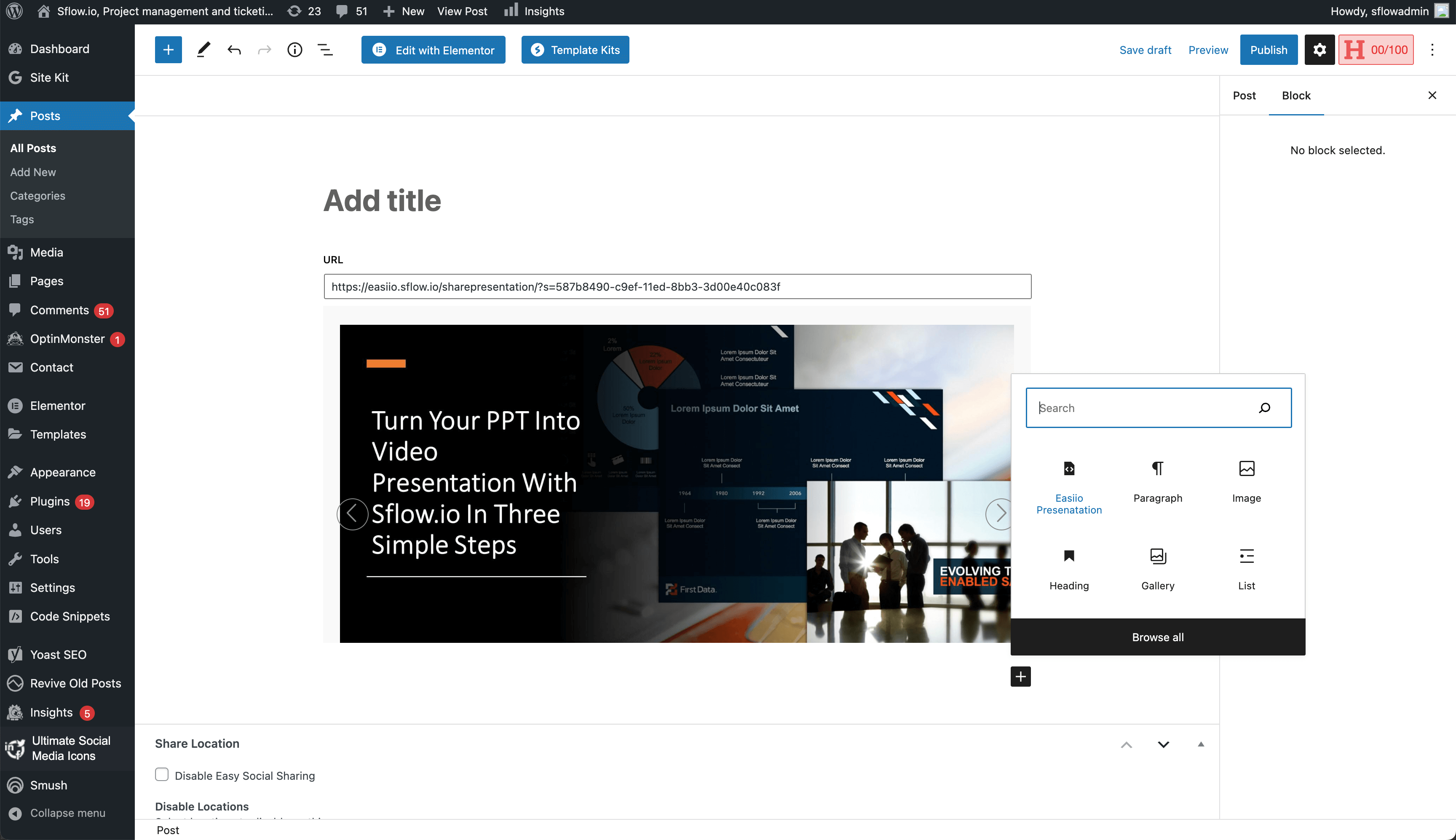

 Sflow
Sflow






WordPress Plugin
The sFlow Video Presentation WordPress Plugin lets you embed video presentations effortlessly on your WordPress website or blog, without worrying about compatibility issues.You can do a search on WordPress Plugin. It's easy to use and integrates smoothly with WordPress, making it perfect for business owners, educators, or anyone who wants to add engaging video content to their website.
 Sflow
Sflow








WordPress Plugin
The sFlow Video Presentation WordPress Plugin lets you embed video presentations effortlessly on your WordPress website or blog, without worrying about compatibility issues.You can do a search on WordPress Plugin. It's easy to use and integrates smoothly with WordPress, making it perfect for business owners, educators, or anyone who wants to add engaging video content to their website.


Project Management Life Cycle is a structured approach that guides project managers and teams through the phases of planning, executing, monitoring, and closing a project. It consists of several key stages, including initiation, planning, execution, monitoring and controlling, and closure. Each stage has specific tasks and deliverables that must be completed to ensure the successful completion of the project. By following the Project Management Life Cycle, organizations can effectively manage resources, mitigate risks, and achieve project goals within the specified time frame and budget. In brief, the Project Management Life Cycle provides a systematic framework for managing projects from start to finish, ensuring that they are completed efficiently and successfully.
The Project Management Life Cycle is essential because it provides a structured approach to managing projects from initiation to completion. By following a defined set of phases, project managers can effectively plan, execute, monitor, and control project activities. This framework helps ensure that projects are completed on time, within budget, and meet stakeholder expectations. Additionally, the Project Management Life Cycle allows for better communication, risk management, and resource allocation throughout the project duration. In summary, the Project Management Life Cycle is crucial for ensuring successful project delivery by providing a systematic and organized approach to project management.


The project management life cycle is a crucial framework that guides the successful completion of projects from initiation to closure. The use cases of the project management life cycle are diverse and essential for ensuring project success. Firstly, it helps in defining clear project objectives and scope during the initiation phase, ensuring alignment with organizational goals. Secondly, it facilitates effective planning and resource allocation in the planning phase, enabling teams to establish timelines, budgets, and deliverables. Thirdly, it supports efficient execution and monitoring of project activities during the implementation phase, allowing for timely adjustments and issue resolution. Lastly, it ensures proper evaluation and documentation of project outcomes in the closure phase, enabling lessons learned and knowledge transfer for future projects. In summary, the project management life cycle serves as a structured roadmap for guiding project teams through each stage of project development, ultimately leading to successful project delivery.

Leverage the power of agile methodologies and AI tools to enhance team collaboration and project success.



01. Kanban view

02. List view

03. Calendar view

04. Github integration

05. Sprint

06. Release

07. Burn down chart

08. Gantt chart

Agile methodologies are widely used in software development for iterative progress and continuous improvement.

Agile project management helps in planning and executing marketing campaigns with flexibility and adaptability.

Agile facilitates rapid prototyping and iterative feedback in product development.

Agile methodologies ensure efficient and adaptable event planning and execution.Agile methodologies ensure efficient and adaptable event planning and execution.

Agile tools improve team communication and collaboration, leading to better project outcomes.

Agile methods allow for quick adjustments based on feedback and changing requirements.

Agile tools streamline workflows and reduce bottlenecks, enhancing overall team productivity.

Continuous testing and feedback in Agile ensure higher quality deliverables.

Agile reduces waste and focuses on delivering value, leading to cost savings.

Agile methodologies encourage regular project reviews and updates, increasing team transparency regarding project progress and goals.

InnovateTech Solutions Chief Product Officer

BrightWave MarketingCampaign Strategy Director

Precision Manufacturing Group Project Management Director
By using Your Website Name,
you agree to our Cookie Policy.